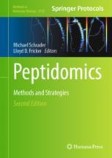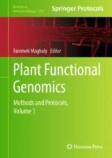Search
Search Results
-
TILLING by Sequencing
The Targeting Induced Local Lesions In Genome (TILLING) is emerging as a preferred technique of reverse genetics. The use of next generation...
-
DREAMS: deep read-level error model for sequencing data applied to low-frequency variant calling and circulating tumor DNA detection
Circulating tumor DNA detection using next-generation sequencing (NGS) data of plasma DNA is promising for cancer identification and...

-
TrEMOLO: accurate transposable element allele frequency estimation using long-read sequencing data combining assembly and map**-based approaches
Transposable Element MOnitoring with LOng-reads (TrEMOLO) is a new software that combines assembly- and map**-based approaches to robustly detect...

-
Sequencing accuracy and systematic errors of nanopore direct RNA sequencing
BackgroundDirect RNA sequencing (dRNA-seq) on the Oxford Nanopore Technologies (ONT) platforms can produce reads covering up to full-length gene...

-
Application of Deep Sequencing in Phage Display
This chapter describes the workflow to implement deep sequencing into standard phage display experiments on protein libraries. By harvesting the...
-
Exome Sequencing
Exome sequencing, also known as whole exome sequencing (WES or WXS), is a technique for sequencing all the expressed genes in a genome (known as the...
-
Reduced Representation Bisulfite Sequencing (RRBS)
Reduced representation bisulfite sequencing (RRBS) enriches CpG-rich genomic regions using the MspI restriction enzyme—which cuts DNA at all CCGG...
-
Sequencing and Assembly of Polyploid Genomes
Polyploidy has been observed throughout major eukaryotic clades and has played a vital role in the evolution of angiosperms. Recent polyploidizations...
-
Comparison of capture-based mtDNA sequencing performance between MGI and illumina sequencing platforms in various sample types
BackgroundMitochondrial genome abnormalities can lead to mitochondrial dysfunction, which in turn affects cellular biology and is closely associated...

-
Targeted next-generation sequencing and long-read HiFi sequencing provide novel insights into clinically significant KLF1 variants
BackgroundKrüppel-like factor 1 (KLF1), a crucial erythroid transcription factor, plays a significant role in various erythroid changes and...

-
Revolutionizing Genomics: Exploring the Potential of Next-Generation Sequencing
Next-generation sequencing (NGS) technologies have revolutionized the field of genomics by enabling high-throughput, cost-effective, and rapid DNA...
-
Application of Single-Cell Sequencing on Stem Cell Research
The variation and heterogeneity within cells are the fundamental features of stem cells. Each tissue has a resident stem cell niche compartmentalized...
-
16S rRNA Amplicon Sequencing
The 16S rRNA amplicon sequencing technique is a microbiome analysis where different samples are analyzed at the same time using multiplexing. The...
-
Estimating microhaplotype allele frequencies from low-coverage or pooled sequencing data
BackgroundMicrohaplotypes have the potential to be more cost-effective than SNPs for applications that require genetic panels of highly variable...

-
UMI-Varcal: A Low-Frequency Variant Caller for UMI-Tagged Paired-End Sequencing Data
The rapid transition from traditional sequencing methods to Next-Generation Sequencing (NGS) has allowed for a faster and more accurate detection of...
-
Mass Spectrometric De Novo Sequencing of Natural Peptides
Natural peptides secreted under stress conditions by many organisms are bioactive molecules with a broad spectrum of activities. These molecules...
-
Genetic Diversity Assessment in Plants from Reduced Representation Sequencing Data
Genetic diversity refers to the variety of genetic traits within a population or a species. It is an essential aspect of both plant ecology and plant...
-
Identification of Closely Related Polymorphisms with Striga Resistance Using Next Generation Sequencing
Molecular markers are powerful tools to enhance speed of breeding. Recent advances of sequencing technology allow us to identify most polymorphisms...
-
Mitochondrial DNA Enrichment for Sensitive Next-Generation Sequencing
Mitochondrial DNA (mtDNA) encodes components essential for cellular respiration. Low levels of point mutations and deletions accumulate in mtDNA...
-
HATCHet2: clone- and haplotype-specific copy number inference from bulk tumor sequencing data
Bulk DNA sequencing of multiple samples from the same tumor is becoming common, yet most methods to infer copy-number aberrations (CNAs) from this...

